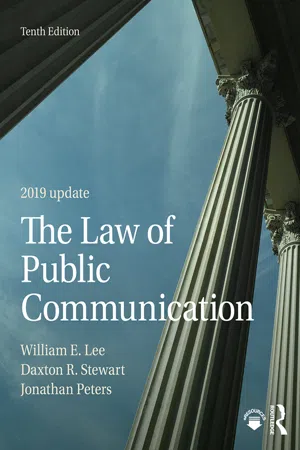The bankruptcy and closure of Gawker are largely due to the actions of Silicon Valley billionaire Peter Thiel who paid the $10 million fee of Hogan’s high-priced legal team because he wanted to extract revenge on Gawker for an earlier story reporting Thiel was gay. Thiel’s role as secret benefactor and his motives were unknown to the jury and only became public after the judge sustained the jury verdict. Thiel’s outrage stemmed from a 2007 story about his sexual orientation in Valleywag, a now-defunct Gawker Media blog. Thiel hired a team of lawyers to find other “victims” of Gawker and fund lawsuits against it. Thiel’s financial backing was a game changer; Hogan lacked the money to pay for a high-priced legal team, but with Thiel’s backing he was able to pursue his case. Gawker Media found itself facing huge legal fees as it defended multiple lawsuits in addition to the Hogan suit.
Although the Hogan verdict was likely to be overturned or reduced on appeal, Gawker founder Nick Denton explained the $31 million settlement with Hogan by stating “an all-out legal war with Thiel would have cost too much, and hurt too many people, and there was no end in sight…. Gawker’s nemesis was not going away.”6
As the Gawker case reveals, there are strong social forces seeking to punish the press for its excesses and mistakes. Much of this book discusses the ways by which society holds public communicators accountable, but also explains why the First Amendment generally protects the freedom to publish. Important concepts, such as the line between private information and newsworthy information—concepts that in are flux due to changing social customs—are also explored. The standards designed to protect the press from defamation lawsuits are also explained. While traditional First Amendment doctrine is designed to protect public communicators from the government, the book also explores the protections for a news outlet when a wealthy person pursues a vendetta.
This book also shows that the First Amendment’s protection is not limited to journalists working for mainstream media outlets. As the Supreme Court has noted in a variety of cases, street corner speakers have the same First Amendment protection as journalists. Or, stated in contemporary terms, those who use Twitter or other social media platforms have the same constitutional status as the journalists writing for the New York Times.
The Law of Public Communication explains the law that affects journalists, and other public communicators, such as advertising and public relations professionals. This book will discuss not only the law governing political communication, but also the law of libel, privacy, copyright, obscenity, coverage of court proceedings, reporter-source relationships and access to government-held information. The book focuses on the law affecting the content of public communication, including printed publications, electronic media, advertising and public relations.
This chapter examines legal concepts and procedures that are important to an understanding of the law of public communication. It will explain the purpose and organization of law and describe court procedures. Finally, this chapter discusses how communicators work with lawyers.
The Sources of Law
Law can be defined in many ways, but for our purposes, law is the system of rules that govern society. The system of rules serves many functions in our society, including regulating the behavior of citizens and corporations. Law prohibits murder and restricts what advertisers can say about their products. It provides a vehicle to settle disputes, such as when a reporter refuses to testify in court. Furthermore, law limits the government’s power to interfere with individual rights, such as the right to speak and publish.
The law in the United States comes primarily from six sources: constitutions, statutes, administrative rules and regulations, executive actions, the common law7 and the law of equity.
Constitutional Law
Constitutions are the supreme source of law in the United States and are the most direct reflection of the kind of government desired by the people. Constitutions of both the federal and state governments supersede all other declarations of public policy. The Constitution of the federal government and the constitutions of the fifty states establish the framework for governing. They outline the structure of government and define governmental authority and responsibilities.
Frequently, a constitution limits the powers of government, as in the case of the Bill of Rights, the first ten amendments to the U.S. Constitution. The Bill of Rights, printed in Appendix B of this book, protects the rights and liberties of U.S. citizens against infringement by government. The First Amendment, particularly its prohibition against laws abridging freedom of speech and the press, provides the foundation for communication law.
The federal constitution is the country’s ultimate legal authority. Any federal law, state law, or state constitution that contradicts the U.S. Constitution cannot be implemented; the U.S. Constitution prevails. Similarly, a state constitution prevails in conflicts with either the statutory law or the common law in the same state. However, federal and state laws that do not conflict with the federal constitution can provide more protection for communicators than is available under the First Amendment alone. For example, the majority of states shield journalists from revealing confidential news sources in more circumstances than the First Amendment as interpreted by the U.S. Supreme Court.
The Supreme Court, the nation’s supreme judicial body, has the last word on the meaning of the federal constitution. Each state’s supreme court is the interpreter of that state’s constitution. Only the U.S. Supreme Court can resolve conflicts between the federal and state constitutions. The courts make constitutional law when they decide a case or controversy by interpreting a constitution. In 2010, the U.S. Supreme Court said the First Amendment requires that corporations and unions be permitted to spend money on advertising advocating the elec...
